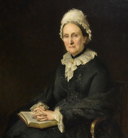
-
Celebrations begin to commemorate 50 years of the University of Dundee
2017 -
The University of Dundee becomes a fully independent institution under the terms of the Royal Charter.
1967 -
Ordinances issued in 1897 made University College form part of St Andrews. and establish a Faculty of Medicine.
1897 -
The Deed formally creating University College Dundee was signed by founders Miss Mary Ann Baxter and her cousin Dr John Boyd Baxter.
1881
The Great War
-
date
Fri, 12 May 2017
-
Running Time
00:04:53
Great War Dundee is a committed partnership with the aim of commemorating the First World War and the impact it had on the city.
Episode Transcript
The task of paying tribute to Dundee’s role in the First World War is an onerous one. It requires an alliance rather than a partnership of organisations that can make a contribution in recreating the picture of a city during one of history’s bleakest periods.
And so Great War Dundee was formed. A committed partnership with the aim of commemorating the First World War and the impact it had on the city.
The University of Dundee is one of the partners in this blend of cultural, educational, civic, commercial and military organisations that have created a programme of events and exhibitions.
The University Archives bring the Dundee of the time to life, with not only the correspondence and images of those who went to fight on the frontline, but also documents, photographs and artefacts from those who kept the city functioning when so many of its young men had gone. More than 30,000 left the city but 4000 of those never saw their families, friends, or sweethearts again.
One of the University’s finest collections is that of Joseph Lee. Lee was a Dundee journalist but served with the Black Watch and was taken as a Prisoner of War. A talented artist, Lee spent some time in London before moving back to Dundee and joining the People’s Journal, a newspaper where he became editor.
He joined the 4th Battalion of the Black Watch in 1914 but was captured near Cambrai in France. He later described his experiences in the POW camps at Karlsruhe and Beeskow in the book, A Captive at Carlsruhe.
This joined two books of war poetry and sketches - Ballads of Battle and Work-a-Day Warriors, both published while he was at the Front.
The University collection has many of Lee’s diaries, poems, sketches, correspondence, and photographs among a much wider sweep that covers experiences at home and abroad over those four years.
Dundee had a population of 175,000 at the the beginning of the war and with the jute industry already in decline, the future looked bleak for a city where two-thirds of the workforce was dependent on textiles.
Four weeks after a royal visit by King George V, Queen Mary, and their daughter, Princess Mary the world changed. As men marched off to an uncertain fate, women moved from jute to munitions and many roles traditionally fulfilled by males. From 1917, they could join the women’s arms of the forces, fulfilling the roles that would keep men away from the fighting.
The day of September 25, 1915 was the day that drew a dark and lingering shadow over the city. The carnage of the Battle of Loos. The 4th Battalion, Dundee’s own, suffered heavy losses - 19 of its 20 officers, and 230 of 420 men were either killed or wounded.
More than 60,000 British troops were killed or wounded, with the blame laid squarely at the door of High Command. This saw the first use of poison gas by British forces, with the gas reaching German lines but also floating back to the British position adding the the loss of life.
Every year, Dundee remembers its war dead on September 25, by lighting the beacon at the top of the city’s war memorial on The Law.
The hope of the Great War Dundee project is to being together the resources of organisations and individuals throughout the city to makes sure that with every subsequent generation we will remember them.
Eddie Small

Eddie Small is a lecturer in Creative Writing at the University of Dundee. He was awarded the Student-led ‘Most Inspirational Teacher at the University’ prize in May 2016. His biography of Mary Lily Walker, Forgotten Visionary of Dundee, was launched in 2013, and he was asked to write a play, Dundee’s Four Marys, which has been performed 7 times. He wrote and performed in ‘Pantomime of Death’ at the 2016 Edinburgh Fringe. A committed local historian, he regularly give walking tours of his city.
-
Celebrations begin to commemorate 50 years of the University of Dundee
2017 -
The University of Dundee becomes a fully independent institution under the terms of the Royal Charter.
 1967
1967 -
Ordinances issued in 1897 made University College form part of St Andrews. and establish a Faculty of Medicine.
1897 -
The Deed formally creating University College Dundee was signed by founders Miss Mary Ann Baxter and her cousin Dr John Boyd Baxter.
 1881
1881